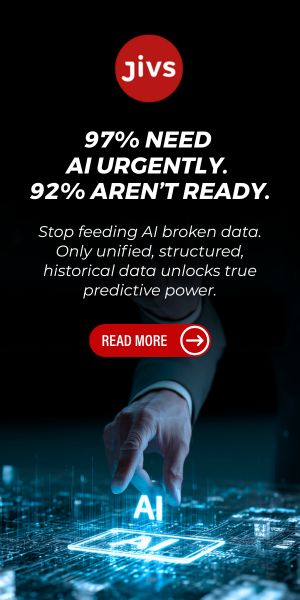Enterprise software is on the brink of a paradigm shift, driven by the rapid advancements in quantum computing. As businesses handle increasingly complex datasets and computational challenges, traditional computing architectures struggle to keep pace. Enter quantum computing—a technology poised to revolutionize industries by solving problems once deemed computationally infeasible. While most enterprise tech leaders are still grappling with present day challenges like cloud migration and Agentic AI proofs of concept, it’s prudent to understand the fundamental principles of quantum computing, learn from companies leading innovation in this space, and begin to project the quantifiable impacts of quantum computing on enterprise software and business performance.
Quantum computing differs fundamentally from classical computing. Traditional computers process information in binary bits (0s and 1s), whereas quantum computers leverage quantum bits or qubits, which can exist simultaneously as both 0 and 1 through a principle called superposition. Additionally, quantum entanglement allows qubits to be interconnected regardless of distance, exponentially increasing processing power. This enables quantum computers to solve complex optimization problems, perform advanced simulations, and enhance artificial intelligence at an unprecedented scale.
For enterprise software, this means faster data analysis, more efficient supply chain management, enhanced cybersecurity measures, and new levels of business intelligence. Companies that integrate quantum computing into their ERP, CRM, and analytics platforms could gain a significant competitive edge.
Several leading technology firms are investing heavily in quantum computing research and its application in enterprise software. IBM is a pioneer in quantum computing with its IBM Quantum initiative. The company has developed the IBM Quantum System One, a cloud-accessible quantum computer that allows enterprises to experiment with quantum algorithms. IBM is working with ExxonMobil to optimize supply chain logistics and energy production, potentially reducing costs by millions annually. Additionally, IBM’s work with Daimler focuses on improving battery materials for electric vehicles through quantum simulations.
Google’s Quantum AI Lab made headlines in 2019 when it achieved “quantum supremacy,” demonstrating a calculation in 200 seconds that would take the most powerful supercomputer 10,000 years. Google has continued refining its quantum computing capabilities, targeting industries like finance, where it collaborates with Goldman Sachs to explore quantum algorithms for risk analysis and fraud detection. This research could reduce financial losses from fraud by billions over time.
Microsoft’s Azure Quantum platform provides cloud-based access to quantum computing for businesses. Microsoft is partnering with BASF, the world’s largest chemical producer, to accelerate material discovery using quantum simulations. Such advancements could cut research and development costs while improving sustainability initiatives.
D-Wave, a leader in quantum annealing, has focused on delivering practical applications rather than waiting for full-scale quantum advantage. Volkswagen has used D-Wave’s quantum algorithms to optimize traffic flow in major cities, reducing congestion and improving urban mobility.
Quantum computing’s impact on enterprise software is likely to unfold in phases. Short-term gains include enhanced machine learning capabilities and early-stage optimization of logistical and financial processes. Long-term benefits will redefine how businesses approach complex decision-making, offering unprecedented efficiency and cost savings.
1-3 Years: Pilot Programs and Early Adoption
- Increased R&D investments in quantum algorithms for business applications.
- Enhanced cybersecurity measures using quantum encryption, protecting enterprises from next-gen cyber threats.
- Integration of quantum-inspired computing into AI-driven enterprise software.
4-7 Years: Commercial Viability and Industry Disruption
- Mainstream adoption of cloud-based quantum computing services, reducing operational costs by 15-30% in industries like finance, healthcare, and supply chain management.
- Quantum-enhanced AI driving 40% faster decision-making in enterprise applications.
- Reduction of supply chain inefficiencies, saving manufacturers and retailers billions annually.
8-15 Years: Full-Scale Business Transformation
- Quantum computing replaces classical encryption with quantum-secure cryptography, mitigating cyber threats.
- Pharma and materials companies leverage quantum simulations for near-instantaneous drug and material discovery, cutting R&D costs by 50%.
- Enterprise software evolves into fully AI-powered, quantum-enhanced decision-making platforms, shifting competitive dynamics in every sector.
While quantum computing holds immense promise, enterprises must navigate several challenges:
- Hardware Limitations: Quantum computers require extremely low temperatures and precise conditions, making large-scale deployment difficult.
- Cost Barriers: The technology is expensive to develop and access, requiring substantial investment from businesses.
- Talent Shortage: There is a scarcity of quantum computing specialists, necessitating workforce training and hiring initiatives.
- Security Risks: Quantum decryption capabilities could threaten existing encryption standards, prompting a shift toward quantum-safe security measures.
Enterprise software is set to undergo a radical transformation as quantum computing matures. While full-scale adoption remains years away, businesses must start preparing now—exploring quantum pilot programs, investing in workforce education, and integrating quantum-ready applications into their IT strategies. Companies that embrace this shift early will be better positioned to capitalize on quantum computing’s potential to revolutionize efficiency, security, and decision-making in the digital age.
As quantum computing continues its rapid evolution, enterprises that stay ahead of the curve will unlock unprecedented opportunities, redefining industry standards and pushing the boundaries of what is possible in the world of business software.
What this means for ERP Insiders
Quantum + AI = what exactly? One of the primary benefits of integrating quantum computing with AI and ML is the potential for dramatically faster training of machine learning models. Quantum algorithms can process vast datasets more efficiently, reducing the time required to train complex models. Some estimates predict that quantum-enhanced AI could improve machine learning efficiency by up to 1,000 times, allowing models to be trained and deployed more rapidly. Quantum computing excels at solving complex optimization problems, which are central to many AI and ML applications. By leveraging quantum algorithms, businesses can achieve more efficient resource allocation, develop better recommendation systems, and enhance predictive models. This leads to improved operational efficiency and more effective decision-making processes.
What is shaping the trajectory of quantum development? The maturation of quantum computing is a multifaceted process influenced by technological innovations, financial investments, collaborative ecosystems, workforce readiness, and geopolitical dynamics. Quantum systems are inherently susceptible to errors due to decoherence and external disturbances. Enhancing error correction methods is vital for maintaining qubit stability and achieving reliable computations. Developing quantum computers with a large number of interconnected qubits is essential for tackling complex problems. Innovations in qubit design and control mechanisms are necessary to scale quantum systems effectively. Companies like QuEra have secured substantial funding, with over $230 million raised to advance fault-tolerant quantum computing technologies. Such investments accelerate research and development efforts. National investments, exemplified by Australia’s $940 million commitment to quantum computing initiatives, underscore the strategic importance of this technology and provide essential resources for its progression. Collaborations among universities, research institutions, and corporations foster innovation and address complex challenges in quantum computing. Initiatives like Quebec’s DistriQ Quantum Innovation Zone exemplify the benefits of merging research with entrepreneurship. Developing common standards and protocols facilitates interoperability and integration, which are crucial for the widespread adoption of quantum technologies. Establishing specialized programs to cultivate a skilled workforce is essential to meet the growing demands of the quantum computing sector. Combining knowledge from physics, computer science, and engineering fosters innovation and addresses the multifaceted challenges inherent in quantum computing development. Global interest in quantum computing has led to competitive advancements, with countries striving for technological leadership. This competition can drive innovation but also presents challenges related to collaboration and standardization. Access to specialized materials and components is critical for building quantum devices. Geopolitical factors can influence supply chains, affecting the availability of necessary resources.
Follow the emerging quantum thought leaders. A few technology visionaries are actively shaping their strategic visions for quantum computing, which generally center around early adoption, specialized research, and the development of practical applications to harness the transformative power of quantum technologies in business. As the Chief Technology and Information Officer of Telefónica Germany, Mallik Rao is spearheading initiatives to integrate quantum technologies into the company’s infrastructure. In collaboration with Amazon Web Services (AWS), Telefónica Germany is conducting pilot projects to optimize mobile tower placement and enhance network security through quantum encryption. Rao emphasizes the importance of early adoption, stating their effort to leverage quantum technologies early. Arvind Krishna, Chairman and CEO of IBM, has been instrumental in steering the company’s focus toward specialized AI and quantum computing. Under his leadership, IBM is investing in quantum computing research, anticipating significant breakthroughs by 2030 that could restore its dominant industry position. Krishna’s strategic vision encompasses developing reliable AI tools tailored to specific use cases and advancing quantum computing capabilities to address complex business challenges. Microsoft’s CEO, Satya Nadella, is advocating for businesses to become “quantum-ready,” highlighting the imminent potential of quantum computers to solve complex problems and create new business opportunities. Under his leadership, Microsoft has developed Azure Quantum, a cloud-based platform providing access to quantum hardware and software solutions. Sridhar Tayur, a professor at Carnegie Mellon University, has established the Quantum Computing Group to explore optimization problems relevant to operations research and management. His strategic vision involves making quantum computing as a service a reality, focusing on developing hybrid quantum-classical algorithms and applying them to practical business challenges. Tayur’s work exemplifies the integration of academic research with real-world applications, aiming to bridge the gap between theoretical advancements and business implementations.






